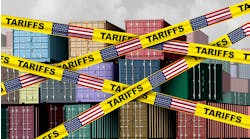There has been a widely accepted economic concept that was created during the Reagan Administration and has been used and abused in every election since 1980. It is variously called "trickle-down" or "supply side" economics. The idea behind this concept is that if you reduce taxes for the wealthy, financial benefits will somehow trickle down to everybody in the form of increased jobs, increased wages and higher economic growth.
The trickle down idea has become so popular that, despite the recession and the decline of median income of the middle class, it is still regarded by conservatives as an absolute truth. For example, consider Congressman Paul Ryan's 2012 budget plan, The Path to Prosperity, Restoring America's Promise. Ryan claimed the tax cuts in his plan would create nearly 1 million new private-sector jobs the first year and result in 2.5 million additional private sector jobs in the last year of the decade. He also claimed it would spur economic growth, increasing real GDP by $1.5 trillion over the decade, and unleash prosperity and economic security, yielding $1.1 trillion in higher wages and an average $1,000 per year in higher income for each family.
However, an analysis of Ryan’s tax proposal, by the Center on Budget and Policy Priorities, counters that the plan would give people making around $30,000 per year about $246 per year in tax cuts, while those making more than $1 million a year would save $265,011 per year. Ryan also proposed eliminating capital gains taxes. If you take his plan literally, he wants you to believe that that cutting taxes for the wealthiest people would actually increase tax revenue for the government.
Another believer in supply side economics is President-Elect Donald Trump. During his campaign, he suggested that he would do the following:
- cut the top rate of individual taxes from 39.6% to 25%.
- reduce the corporate tax rate from 35% to 15%
- allow corporations to repatriate some of the $2.4 trillion they have hidden in foreign tax havens at 10% rate (rather than 35%)
- repeal estate and gift taxes
- eliminate the 3.8% investment surtax which applies to individuals who make more than $200,000 per year.
Yet another example was President George W. Bush, with his 2001 and 2003 tax cuts. The 2001 tax cut was called the Economic Growth and Tax Relief Reconciliation Act. Both bills were sold as job creators and tax cuts for the average citizen. In reality the average citizen got a one-time $300 rebate and, as the phased-in tax cuts grew through the decade, the top 1% of tax payers received a 51% tax cut.
The 2001 cuts were followed by continued job losses for about a year because of the recession; it wasn’t until after 2003 that jobs were created. However, Bush had forecasted that 3.31 million jobs would be created, and during his eight-year presidency only 1.08 million jobs were created. For comparison, the Clinton administration in the decade before Bush created 22.7 million jobs without tax cuts.
The idea that wealthy people and corporations will create more jobs when paying lower tax is a story that simply won’t go away. I think the strategy has been to never let the truth get in the way of a good story. A good story will trump scientific studies if it is convincing to most voters. And, I have to admit, Republicans have done a good job of keeping the supply side myth going for four decades.
But today, citizens know that their wages are stagnant or declining, and we are not creating many jobs, particularly in manufacturing. As Trump supporters and Bernie Sanders supporters have exhibited, citizens are angry that they were deceived.
The proponents of trickle-down economics count on the fact that nobody is keeping score, but in the past 10 years both government agencies and independent economists have looked into the issue and found there is little or no supporting evidence for the theory.
Taxes and Income Inequality
What the latest studies have shown, however, is that tax rate reductions are correlated with the increasing concentration of income at the top of the income distribution.
Considerable evidence demonstrates that supply side economics has not worked and was simply a program that increased the wealth of the top 1%. According to a study by the Congressional Research Service,
“There is no conclusive evidence, however, to substantiate a clear relationship between the 65-year steady reduction in the top tax rates and economic growth. Analysis of such data suggests the reduction in the top tax rates have had little association with saving, investment, or productivity growth. However, the top tax rate reductions appear to be associated with the increasing concentration of income at the top of the income distribution.”
The article "Trickle-Down Economics: Four Reasons Why It Just Doesn't Work" concludes:
“Overall, data from the past 50 years strongly refutes any arguments that cutting taxes for the richest Americans will improve the economic standing of the lower and middle classes or the nation as a whole. To be sure, the economic indicators examined in this report are dependent on a variety of factors, not just tax policy. However, what this study does show is that any attempt to stimulate economic growth by cutting taxes for the rich will do nothing--it hasn't worked over the past 50 years, so why would it work in the future? To put it simply and bluntly, the top-bracket tax cut is an ineffective attempt at stimulus that will not cause any growth--unless, of course, if you're talking about the size of the deficit.”
Even David Stockman, one of the designers of supply side economics, admitted in a 1981 interview with The Atlantic that, "It's kind of hard to sell 'trickle down,' so the supply-side formula was the only way to get a tax policy that was really 'trickle down."
Another study by the Center on Budget and Policy Priorities found that tax cuts do not pay for themselves, they don’t fuel economic growth, they have made distribution of take home pay more unequal, and extending the tax cuts without paying for them will reduce economic growth.
An International Monetary Fund report, "Causes and Consequences of Income Inequality," makes the case that income inequality is connected to trickle-down economics. Their report concludes:
"Our analysis suggests that the income distribution itself matters for growth as well. Specifically, if the income share of the top 20 percent (the rich) increases, then GDP growth actually declines over the medium term, suggesting that the benefits do not trickle down. In contrast, an increase in the income share of the bottom 20 percent (the poor) is associated with higher GDP growth."
Yet another report, “Rewriting the Rules of the American Economy," asserts that, since the 1980s, trickle-down economics has shrunk the middle class and increased the concentration of wealth at the top.
But it doesn’t have to be this way: We can rewrite the rules that structure our economy and society to promote both stronger growth and shared prosperity.
One thing that is not often discussed is the effect of tax cuts on the federal deficit. All conservatives hate the deficit but tend to ignore the effect of tax cuts on raising the deficit. There is a definite correlation between the two tax cuts that Congress passed during the Bush presidency and the increase in the federal deficit. An editorial in the New York Times, “Taxes, the Deficit, and the Economy,” declares: “The full Bush era tax cuts were the single biggest contributor to the deficit over the past decade reducing revenues by about $1.8 trillion between 2002 and 2009. The fact is that any tax cuts today will increase the deficit unless Congress passes offsets."
On the other hand, we know that putting more money in the pocket of consumers will create more consumption. The Institute for Policy Studies calculated that "Every extra dollar going into the pockets of low wage workers adds $1.21 to the national economy. Every extras dollar going into the pockets of a high income American, only adds 39 cents to GDP."
It seems every time someone in the media asks an executive of a large public company why they aren’t hiring people, they always answer that they can’t hire until there is more demand. This is a pretty straight forward explanation that assumes when consumption and demand rise, factories begin ramping up production and hiring more people. So hiring depends on consumption, demand and production; it has little to do with whether a company gets a tax cut.
Anybody who has taken Economics 201 knows that employment is driven by consumer demand, not the amount of money saved by tax reduction. A business or entrepreneur will not use profits to add more workers unless there is consumer or business demand for their product or service. A small business owner says, “I would go so far as to say that tax rates have virtually no effect on my hiring decisions. The only factor that does is the demand for my company’s services.”
Even though there is now overwhelming data proving that tax cuts have little to do with creating jobs, higher wages, or growth, the idea just won’t go away. The reason is that Republicans seem to need to use this myth as an economic absolute to justify selling their programs. They will continue to use the tax reduction myth and sell it as an economic truth no matter what the evidence.
They don’t want to face up to the reality of economic theory and support the idea that we really need demand side economics not supply side. The inconvenient fact is that without the middle class purchasing enough goods and services as the consumption part of our economy, GDP growth will remain below 2%.
Trickle-down economics has been the big lie for forty years and perhaps the most destructive idea that ever pummeled the middle class, and our unequal economy. We need economic strategies designed for the many--not the few.
Michael Collins is the author of The Rise of Inequality and The Decline of the Middle Class. His website is mpcmgt.com




